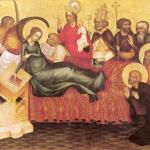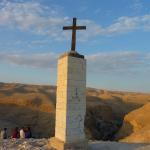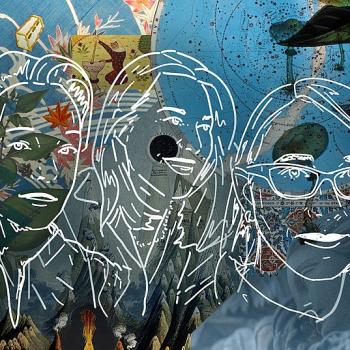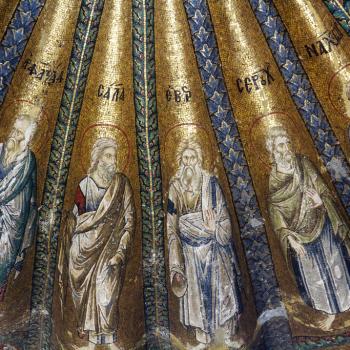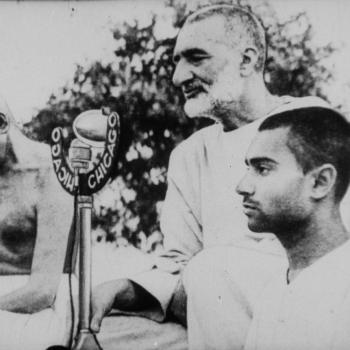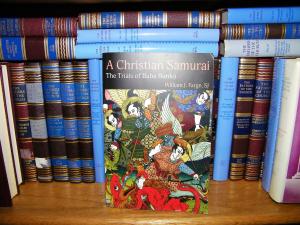 A Christian Samurai: The Trials of Baba Bunkō by William J. Farge, SJ. (Washington, DC: Catholic University of America Press, 2016), xxv +300 pages.
A Christian Samurai: The Trials of Baba Bunkō by William J. Farge, SJ. (Washington, DC: Catholic University of America Press, 2016), xxv +300 pages.
In Tokugawa Japan, Christianity had become outlawed. While it appeared that Christianity had died out, and many historians therefore have ignored its historical presence in Japan during this era, it is now apparent that Christianity went underground. Christians hid themselves from the government, and they might have had access to the best catechetical material so their understanding of the faith was limited, but their faith was tried and true. They kept to it the best they could. Hidden Christians continued to pass down their faith and traditions to family and those friends they could trust. Nonetheless, they did it in an unusual way: they engaged their own cultural tradition and used it to symbolize their own faith, making it look like they followed social norms while being Christian. Many Christians would use images of the Buddha as a way to represent Christ, making it difficult for non-Christians to know who were and those who were not Christians.
This was exactly what authorities in Japan also wanted. If some Christians continued to exist within a particular territory, after Japan had declared Christianity had been eradicated from the land, it would be a major embarrassment to all. Thus, if particular groups of Christians kept to themselves and caused no serious problems, they were ignored, with Christianity officially said to no longer exist. In times of social unrest would some Christians be found and executed as traitors and spies, but otherwise, if a Christian were found, in order to keep the semblance that Christianity no longer existed in Japan, they would be tried and executed for some other crime. Only in a few instances, such as with Baba Bunkō, will there be indication that the real crime was the person was Christian.
William Farge, SJ, therefore gives us an interesting piece of history; he explores an era of Japan when Christianity was said to be no longer extant, only to find its presence and influence must have existed because when Christianity was allowed to once again exist in Japan, Christians made their faith public showing that some sort of tradition and faith was passed down during the era it was illegal for someone to be Christian. Christianity had been proven to exist underground, though most historians have ignored their presence and have accepted official declarations to the contrary. To be sure, it is easy to believe the official records because much of the history of these Christians have been lost. It has to be picked up by the few scraps we can find which demonstrate its continued existence, and even then, much extrapolation has to be made to complete the picture. It is with the life, teachings, social commentary and execution of Baba Bunkō that Farge finds the best evidence of Christian influence actually having an effect on Japan; for here we have a person, a former minor official, who spoke out against the abuses he found in his time and actually wrote down his thoughts, so we can explore than and see the Christian influence throughout.
Baba Bunkō, was a Samurai who went to Edo and became disconcerted with the moral laxity and abuse of power he saw. For this reason, he abandoned political pursuits for himself and instead became a disenfranchised storyteller, offering satire and criticism against the authorities. He would tell stories of these officials, turning them into monsters eating away at society, hypocritically abusing their authority, causing harm to the poor and disenfranchised of society. Unlike many other critics of the time, he had no secret as to who the officials he detested were; he made it obvious to his readers and the officials alike, which certainly did not win him any friends or allies within the elite of society. Nonetheless, those who were outcasts, those poor who found themselves in dire predicaments, like prostitutes, often were shown to be morally superior to those who claimed moral superiority because of their official authority or status. Prostitutes were more likely to be the heroes of victims in his stories who were attacked and mistreated by monstrous officials, secular and religious, who did not even have to hide their depravity from the world. Thus, the poor, who found themselves abused by Samurai and the judges who were placed in power supposedly for the sake of the common good found Baba Bunkō to be their champion; his stories and pamphlets caused a great stir as he exposed the elite for their grave faults. Buddhist monks and Confucian scholars were seen to be shady figures who used religion for the sake of personal gain, seeking to gratify their lusts instead of follow the teachings which they prescribed.
There was something unique to the way Baba Bunkō expressed his criticism: had had a moral core which directed him and his arguments. Many other critics were more relativistic in their engagement with society and so they had difficulty in exposing the evil which was present in Edo because it was difficult for them to truly have a ground by which they could call it evil. Farge suggested, with much credibility that this itself was an indication that Baba Bunkō was a Christian. It was not just that he held an objective morality, but the contents of that morality followed the principles of Christian morality. Likewise, at times Baba Bunkō went further, and suggested the superiority of Christianity itself, such as when he suggested Japan should change its banner from the sun to that of a representation of the eucharist. The oddity of the suggestion is explored by Farge, who explains how and why Baba Bunkō was able to raise it up, and in it, show a perfectly Christian understanding of what the eucharist is, in many of its details.
To complete his evidence that Baba Bunkō was a Christian, Farge also looks at and examines how and why he was executed. Criticism which Baba Bunkō gave ordinarily ended up with fines and exile. Officials would understand how troubling it would be to make a political martyr, and yet Baba Bunkō was indeed executed. In the midst of his charges, there is a mention that he had spread “strange and dishonorable views.” The vagueness of the claim is what led Farge to consider it was a euphemism used to indicate he was Christian. It was still on the record that Christians were to be executed, but since it was also stated Christians were no longer in Japan, what would be the way to keep up the appearances while following the rule of law? By not mentioning in clear form that someone was a Christian when they were executed, unless unusual circumstances allowed it (such as foreigners found coming into the country smuggling Christian books). The authorities wanted to keep up appearances, but when they discerned his views, Baba Bunkō could not be merely exiled so he can continue to spread Christian faith, he had to be executed. That at least is the theory of Farge which he takes considerable length to demonstrate as being the most credible reading of Baba Bunkō’s execution and he makes a very strong case of this point though without the supporting evidence he offered it would not have been sufficient.
This book is, therefore, a history which is a critical reading of an era of Japan that looks beneath the surface of official history and seeks to find what was left out of it. In doing so, Farge admits he is being speculative, but cautiously so, using strong evidence for his new interpretation of history. Christians did continue to exist in Japan; Baba Bunkō wrote in the style with themes one would expect from a Christian, and he suffered the unusual fate of execution for his writings which would otherwise left him in exile. While this is a major part of the work, the other part is an exploration of the life and thought of Baba Bunkō, exploring his stories and writings, putting them in context, showing how and why authorities were described by him as being monsters. They help highlight the reason why Baba Bunkō felt revolted by what he saw happening in his society, and much of what we read him to be concerned about is something Christians in modern America should take in consideration as we look at our officials and how they resemble the monsters of Baba Bunkō’s stories (though with changes, for now the religious monsters would most likely be Christians, not Buddhists or Confucians).
This is a worthwhile book to read and study. Baba Bunkō’s moral characters comes out strong, especially in his support for the outcast of society; as portrayed in here, the Christian element is certainly discernable. Baba Bunkō seemed more at home with the lowlife of Edo than with the supposed superior authorities. In his portrayal of the two, there is something Christ-like in his understanding of the two, for Christ also lived with and thrived more with the underclass, those ridiculed by the elites, than the elites themselves, using parables which clearly spoke out against the religious and political elite of his time.
Yet this book at times, like many books of historical research, can sometimes seem to go on beyond the interest of the reader to make its points; there is a sense of repetition of themes, which is understandable because Farge needs to make his evidence as clear as possible. To do this, he took his cues from Baba Bunkō, exploring his stories, showing their meaning to an audience which would otherwise have no clue to their implications, and in doing so, many of the issues repeat themselves and sometimes can seem to drag on to the modern reader. This is only a minor problem, and it is a necessary one if Farge is to make his point as clear as possible.
It is also invaluable that the reader has access, at the end, to a complete translation of Baba Bunkō’s “Contemporary Edo: An Album of One Hundred Monsters.” However, by the time a reader gets to the work itself, they will likely feel as if they have already read it – for its texts are used within the rest of the book itself, constantly used to demonstrate the problems facing the Japanese in the late 18th and early 19th centuries, showing how Baba Bunkō addressed those problems.
If one like history, especially exploratory history, this book is a gem. For those interested in Japan and Samurai in general, this book is also invaluable, for it shows what underlies the romantic side of the Samurai myths. For those interested in the history of Christianity in Japan, this is a key text which revolutionizes the field. For those looking at a way to see the present through the lens of history, Baba Bunkō’s methods might even be of use and so worth exploring. For this reason, I would certainly recommend this book to people, most of whom will likely find much to interest them if they decide to read it.
[Image=Henry Karlson photograph of his own book on a bookshelf]
Stay in touch! Like A Little Bit of Nothing on Facebook


